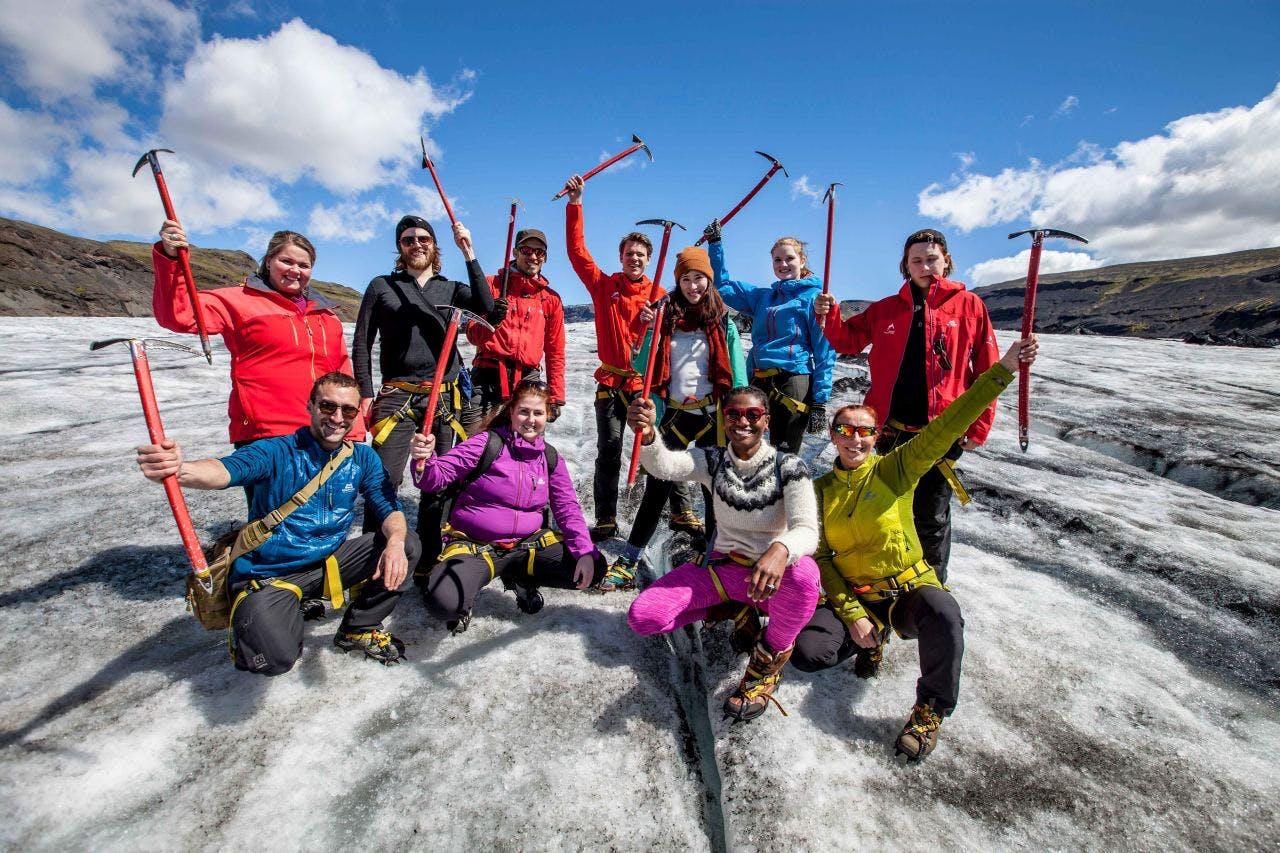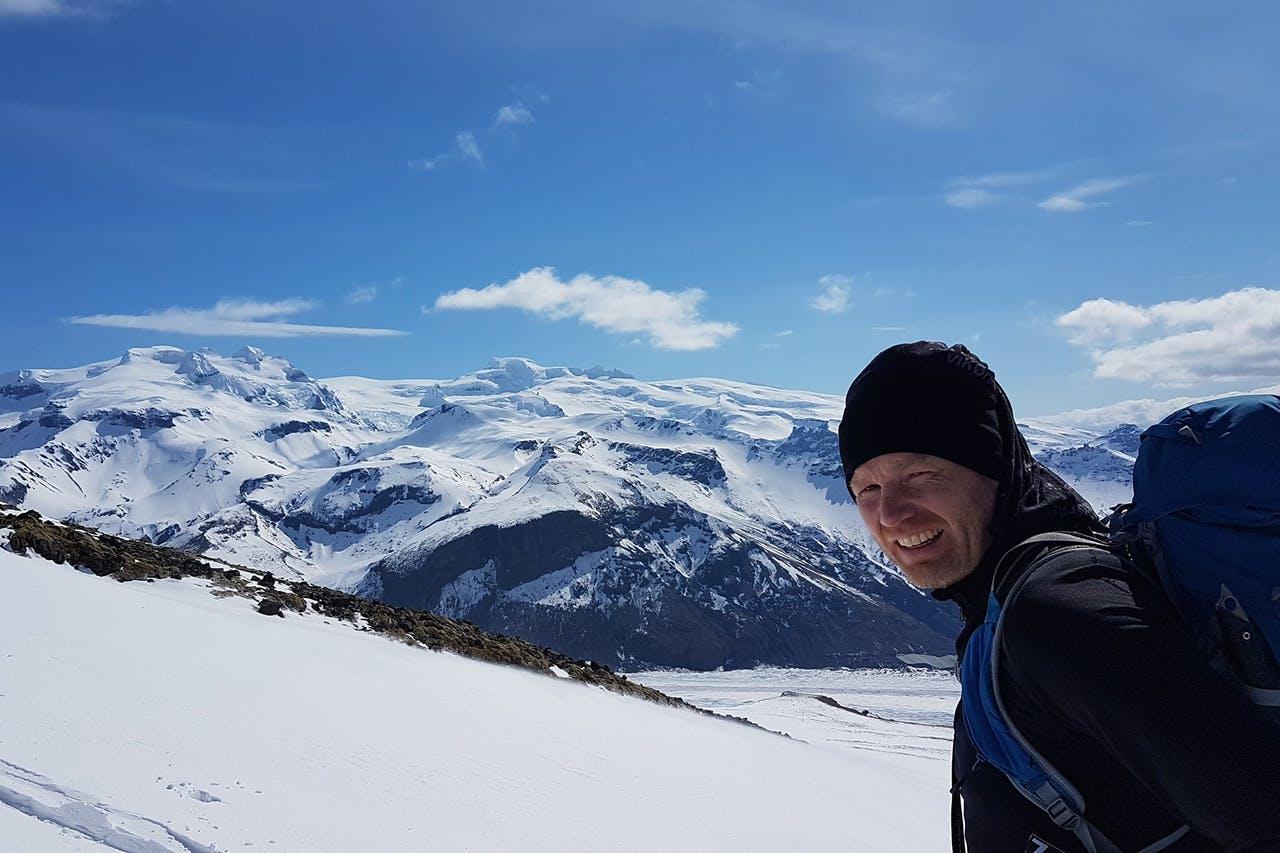A Brief Glacier Fact Sheet of Iceland
| All
Land Rover driving through Iceland's nature
Vatnajökull
The Big One—Vatnajökull. When you glance at a map of Iceland, this massive white expanse in the southeast is impossible to miss. Covering approximately 8% of the country's surface, or around 8,100 square kilometers, Vatnajökull is Iceland's largest glacier and one of the largest in Europe. It serves as the source of numerous rivers and lakes that flow across the region, shaping the landscape.
Beneath this immense ice cap lies an active volcano, Grímsfjall, which is a reminder of the powerful forces at work beneath the surface. Grímsfjall last erupted in the spring of 2011, demonstrating the dynamic and ever-changing nature of this glacial region.
Vatnajökull is not just a geographical feature; it's a vital part of Iceland's natural environment, influencing weather patterns, feeding waterways, and providing a home to a variety of unique ecosystems. Its sheer size and the forces it conceals make it a symbol of the raw, untamed beauty that defines Iceland.

Iceland's highest peak, Hvannadalshnjúkur, rises above the southern part of the Vatnajökull glacier, commanding attention with its presence. Although its elevation is "only" 2,110 meters, ascending to the summit is more accessible than one might imagine.
While the journey is certainly physically demanding, requiring up to 14 hours of strenuous effort, the climb itself is not technically difficult. However, the route is riddled with crevasses, and the unpredictable Icelandic weather necessitates the guidance of seasoned experts—Mountain Guides being a highly recommended choice. For those who undertake it, the ascent to Hvannadalshnjúkur is an adventure that rewards every step with unparalleled views and a profound sense of accomplishment.
Vatnajökull National Park, where this peak resides, is a treasure trove of natural wonders. The park is home to breathtaking outlet glaciers that extend from the vast Vatnajökull glacier, offering views that are nothing short of spectacular.
This is the setting for many of our Glacier Hikes, where adventurers can explore the icy expanse up close, surrounded by the serene beauty of the glacial landscape. Another gem within the park is Skaftafell, renowned for its extraordinary natural features and a wide array of activities. Whether you're marveling at the cascading waterfalls, hiking through lush valleys, or simply absorbing the tranquility of the environment, Skaftafell offers an experience that resonates deeply with nature lovers and thrill-seekers alike.
Langjökull
Langjökull, which translates to "Long Glacier" in Icelandic, is the second-largest glacier in the country, covering an area of approximately 950 square kilometers. Although it lies a bit off the typical tourist path, Langjökull remains accessible during the summer months, particularly with a 4x4 vehicle.
The area surrounding this impressive glacier is rich in natural wonders, including caves where outlaws once sought refuge, stunning waterfalls, and soothing hot springs, offering visitors a variety of unique experiences.
One of the notable routes in this region is the Kaldidalur track, also known as Cold Valley. This famous highland route runs to the west of Langjökull, providing a scenic and adventurous journey. The track begins (or ends, depending on your direction) at Þingvellir, the historic site of Iceland's ancient Viking parliament, which dates back to 930 AD.
From Þingvellir, the road ventures into the highlands, passing through the stark and barren landscape of Kaldidalur before reaching the glacier. Travelers can then continue on to the Húsafell area and eventually descend into the Borgarfjörður region, completing a route that combines history, natural beauty, and the rugged charm of Iceland's highlands.

Eyjafjallajökull
Hofsjökull
Hofsjökull glacier, covering approximately 925 square kilometers, is Iceland's third-largest glacier, following Vatnajökull and Langjökull. Positioned in the heart of the Icelandic highlands, Hofsjökull is nestled between these two larger glaciers. Access to this remote glacier is limited to two highland tracks, the Kjölur and Sprengisandur mountain roads, which are open only during the summer months.
Situated at the centre of the island, Hofsjökull's slopes are notably steep, and, like all glaciers, it is crisscrossed with numerous crevasses. Due to its isolation and challenging terrain, it is strongly recommended not to venture there alone. This glacier's remote and rugged nature makes it a destination for experienced adventurers, ideally accompanied by knowledgeable guides who can navigate the challenging landscape safely.
Mýrdalsjökull & Eyjafjallajökull
Mýrdalsjökull and Eyjafjallajökull are often referred to as the famous twins of Iceland, separated by a mountain pass known as Fimmvörðuháls, or Five Cairns Pass. This region gained international attention following the 2010 eruption of Eyjafjallajökull, which caused significant disruption, leaving a lasting memory for many. Nearby, the Katla volcano, lying beneath the Mýrdalsjökull glacier, remains dormant but is considered overdue for an eruption, making it a subject of ongoing geological interest.
Sólheimajökull, an outlet glacier from Mýrdalsjökull, is a popular spot for Glacier Walks, attracting adventurers eager to explore its icy expanse. However, hiking Eyjafjallajökull is a more challenging endeavor and should only be attempted with the guidance of a professional.
When visiting this area, be sure to take time to relax in the Seljavallalaug pool, a hidden gem in the mountains, and explore the nearby natural wonders. The iconic Seljalandsfoss and Skógafoss waterfalls, the dramatic cliffs of Dyrhólaey, and the striking black sand beaches of Vík are all must-see destinations that offer a glimpse into the diverse and breathtaking landscape of southern Iceland.

The Snaefellsjökull summit
Snæfellsjökull
Snæfellsjökull, the smallest glacier on the list, may be modest in size, but it is set within one of Iceland's most stunning regions, the Snæfellsnes Peninsula. This rugged yet breathtaking stretch of the Icelandic west coast juts out into the Atlantic Ocean like a powerful arm. The peninsula is defined by a chain of mountains that runs from north to south, culminating in the iconic Snæfellsjökull glacier.
This glacier gained worldwide fame through Jules Verne's *A Journey to the Center of the Earth*, where it serves as the entry point for the characters' descent into the Earth's core. Beyond its literary fame, the area is steeped in mysticism and folklore. Just south of the glacier lies the village of Arnarstapi, a place imbued with an otherworldly atmosphere, often whispered about as a landing spot for UFOs.
Perhaps it's this blend of natural beauty and mystical allure that makes Snæfellsnes the source of so many folk tales, fairy stories, and vivid legends. The glacier, though small, sits at the heart of a region that feels alive with both the power of nature and the rich tapestry of Icelandic storytelling.
Keep me informed about the Icelandic Mountain Guides Blog
Outdoor adventure in Iceland is our specialty. Subscribe to our free monthly newsletter to learn when to go, what to do and where to have the best adventures in Iceland.
Related Blog Posts

What to Wear on a Glacier Hike in Iceland
2024-12-05
Safety Tips for Hiking in Iceland’s Remote Wilderness
2024-08-12
Summiting Hvannadalshnúkur - A guides perspective
2020-05-18
Your Ultimate Guide to Sólheimajökull
2022-08-16
Your Ultimate Guide to Mýrdalsjökull
2022-09-26
The Ultimate Guide to Skaftafell
2022-06-08
The Ultimate Guide to Glaciers and Glacier Hikes in Iceland
2023-03-29
Related Tours

Glacier Discovery - 3-hour Sólheimajökull Glacier Hike

Snæfellsjökull Summit Hike

Hvannadalshnúkur - Iceland’s Highest Summit

Glacier Adventure - 4.5-hour Skaftafell Glacier Hike

Skaftafell Glacier Hike and Ice Climbing

Skaftafell Ice Cave Tour & Glacier Hike
